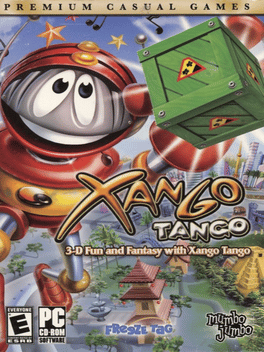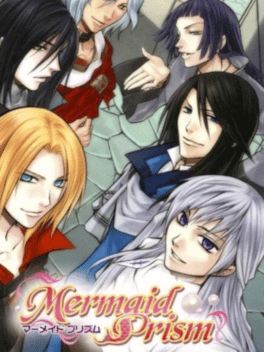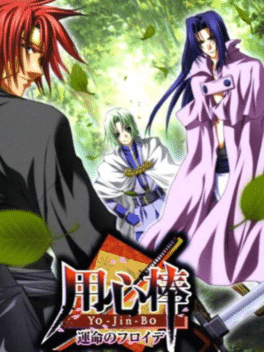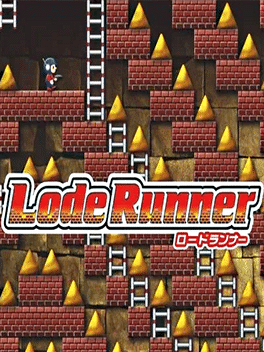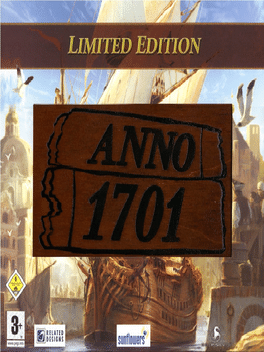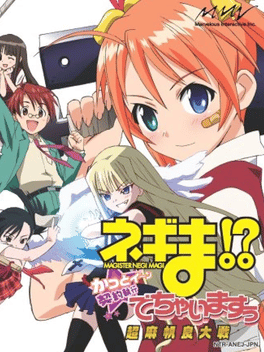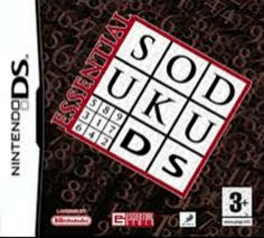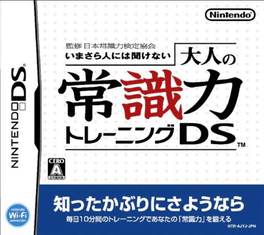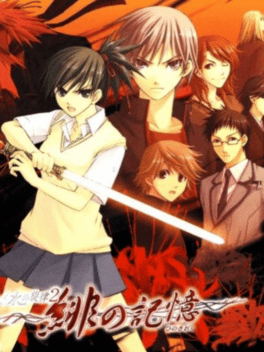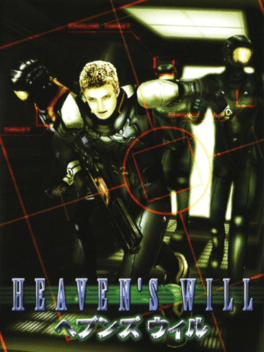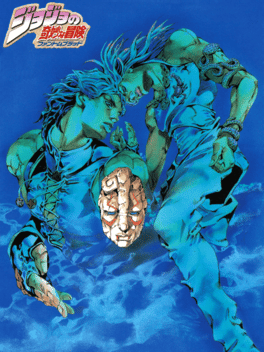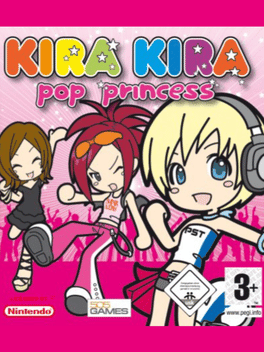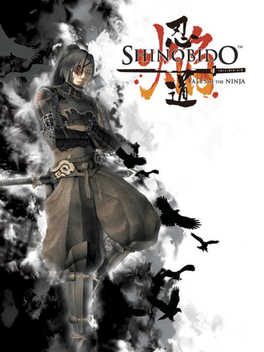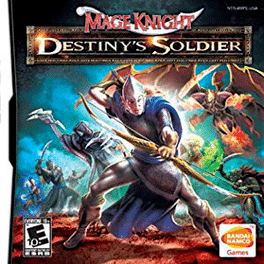New Games - Page 10222
-
Xango Tango
2006
Xango Tango
2006
Help this amazing toy robot ‘Xango’ find his upgrade parts in this brain-stretching, 3D animated action puzzle adventure. Match 3 colored crates and watch ’em explode in Classic mode. Solve brain-twisting puzzles in Puzzle mode, or sit back, relax, and play without time pressure in Relax mode. Exotic landscapes, lively tango music and wacky dances make this lively adventure fun for the entire family. Help Xango find all of his parts to witness the surprise ending! -
Mermaid Prism
2006
Mermaid Prism
2006
Mermaid Prism is an Adventure game, developed by Vingt-et-un Systems and published by D3Publisher, which was released in Japan in 2006. -
Yo-Jin-Bo: Unmei no Freude
2006
Yo-Jin-Bo: Unmei no Freude is a port of Yo-Jin-Bo for Playstation 2. It adds an alternate Good ending for Tainojo (Bo) and added 2 routes for Harumoto and Kasumimaru. -
Lode Runner
2006
Lode Runner
2006
A remake of the 1984 classic arcade puzzle game with the same name. You're a highly trained Galactic Commando, deep in enemy territory. Your mission: to recover a fortune in gold, stolen from the Bungeling people by their power-hungry leaders. You'll be running, jumping, and climbing heroically, solving perplexing puzzles. With your laser pistol, you'll drill passageways through stone floors and barriers. To get through this mission alive, you'll need more than fleet feet and good looks. You'll need your quick wits and brains. And more than just a little luck. -
Anno 1701: Limited Edition
2006
This limited edition of 1701 A.D., of which only 17,001 units exist, includes: - 1701 A.D. - 1701 A.D. art book - 1701 A.D. key fob - 1701 A.D. soundtrack DVD in 5.1 surround sound - One of 3,400 drawings signed by the artist framed in Passepartout - Five postcards with 1701 A.D. motives - Production overview-poster - Certificate of authentication -
Negima!? Magister Negi Magi: Chou Mahora Taisen Cut-iin, Keiyaku Shikkou Dechai-masuu
2006
The first Negima game for the Nintendo DS. A strategy game that plays similarly to Namco X Capcom and Super Robot Taisen OG Saga: Endless Frontier with some interactive adventure game elements thrown in. -
PachiPara 13: Super Umi to Pachipro Fuuunroku
2006
PachPara 13 is one of the many titles in Irem's long-running pachinko simulation series. It features faithful 3D recreations of two pachinko machines made by Sanyo Bussan: CR Super Umi Monogatari M55W and CR Super Umi Monogatari M55X. There are two modes available: Tsūjō (Normal) mode allows the player to modify a wide range of settings for each machine, while Jissen (Battle) mode challenges the player to win as many balls as possible on the default settings with a limited starting pool and time limit. There is also a View mode where the various animations that play on the in-game display can be freely viewed. -
Princess Princess: Himetachi no Abunai Houkago
2006
A visual novel based on the anime/manga series Princess Princess. Released on October 26, 2006 for the PlayStation 2 in Japan. -
Essential Sudoku DS
2006
Essential Sudoku DS
2006
With over 2000 different puzzles with increasing levels of difficulty, are you the one the solve them all. As well as the standard number tests, Essential Sudoku also includes variations on the addicitve craze using pictures and colours to make the challenge even more exciting. Great fun whatever your age or ability. -
Otona no Joushikiryoku Training DS
2006
Otona no Jōshikiryoku Training DS (JP) is a Nintendo DS video game better known as General Knowledge Training and Common Sense Training in western territories. You are only able to partake in the activities a little bit each day answering questions regarding art, music, courtesy, manners and other skills. Afterwards you'll be given a stamp no matter how well you performed. -
Heaven's Will
2006
Heaven's Will
2006
A sci-fi action game in which you play a man who awakens one day having completely lost his memory and finds himself trapped in a labyrinth. -
Phil of the Future
2006
Phil of the Future
2006
Players help their favorite characters from the popular Disney Channel series save a town overrun with the mischievous pets from the future – "The Blahs". As Phil, Keeley or Curtis, players collect and assemble more than 20 futuristic gadgets to solve puzzles, overcome obstacles and capture the blahs to save the day. With several mini-games and unlockable features, "Phil of the Future" offers players hours of fun. -
The Cheetah Girls
2006
The Cheetah Girls
2006
Players take on the role of each of the four Cheetah Girls - Galleria, Chanel, Aquanetta and Dorinda, plus Galleria's pedigree pooch, Toto. To prepare for a big gig in Barcelona, players create their own tunes in the music studio, choreograph dance moves and coordinate Cheeta-licious outfits. The game also features mini jobs for each girl - flip ribs on the grill with Aqua; teach dance with Dorinda; make music with Galleria and Toto at home or coordinate outfits at a high-end fashion store with Chanel. -
Battle B-Daman: Fire Spirits!
2006
In this action game based on the toy franchise, you play as a young boy called Yamato who loves his B-Daman machines more than anything. You'll face off in B-Daman battles with Yamato's rivals, making use of special attacks to emerge victorious. Throughout the course of the game, you'll customize your machines and raise Yamato. Yamato will also meet characters both familiar and unknown on his journeys, including the warm-hearted Alan and the sinister-looking Goblin. Only a few have what it takes to become a B-Daplayer; will Yamato become the B-Dachampion? -
JoJo's Bizarre Adventure: Phantom Blood
2006
JoJo's Bizarre Adventure: Phantom Blood is an action-adventure video game adaptation of Phantom Blood released for the PlayStation 2 by developer Anchor Inc. and publisher Bandai Namco Games on October 26, 2006. This is the second game for the PS2 that is based on JoJo's Bizarre Adventure. It was released to coincide with the 20th anniversary of the series. -
Kira Kira Pop Princess
2006
Music/rhythm game where you control a dancing girl by tapping your stylus to a series of beats in time to the music displayed on the touch screen. -
Shinobido: Tales of the Ninja
2006
star 3Shinobido: Tales of the Ninja is a sequel to Shinobido: Way of the Ninja. A North American version was to be released as Shinobido Homura: Soul of the Ninja but was cancelled. The game was followed by Shinobido 2: Tales of the Ninja. -
Star Trek: Tactical Assault
2006
star 6Star Trek: Tactical Assault is a real-time spaceship combat game for 1 or 2 players, featuring a wide array of authentic Star Trek races, ships, and weaponry from the universe of the original Star Trek series. Players take command of powerful Federation and Klingon warships and must outthink and out duel their opponents in order to succeed. Play through either the Federation or Klingon campaigns in single-player mode or go head-to-head against a friend in wireless multiplayer action. -
Mage Knight: Destiny's Soldier
2006
star 4The year is 435 Tz, and every faction in the Land is at war, and if it continues there won't be much Land left to fight over. The strain on the world's magical energy is literally tearing the Land apart. The Land's fate lies in your hands. You must fight hard and earn the respect of all the races of the Land, and together you must fight to keep the Land alive. Travel the Land earning respect points by battling small armies that you'll find along your journey, and eventually work your way up to all out war. The more respect points you gain, the more inclined warriors will be to join your army.

